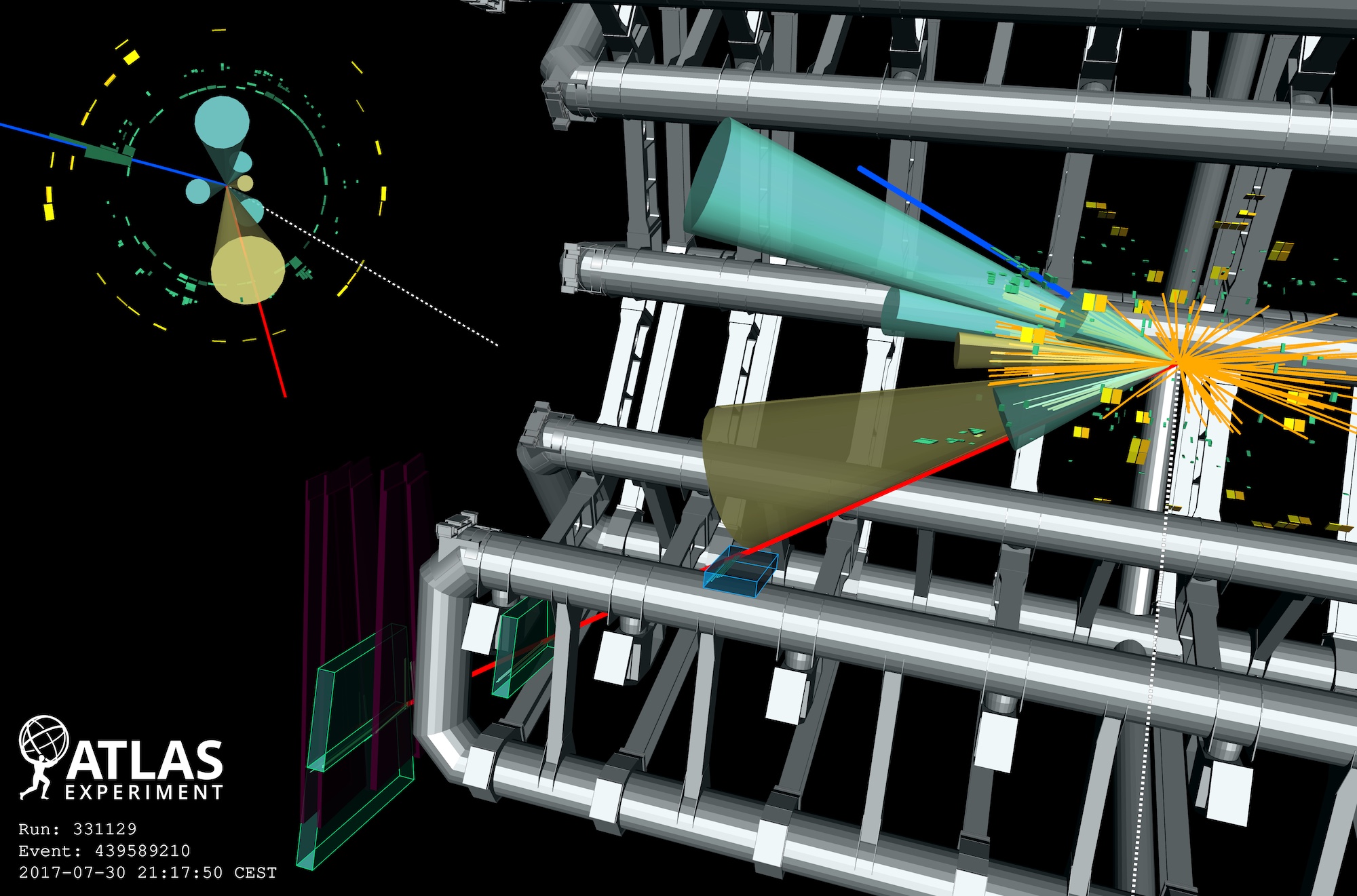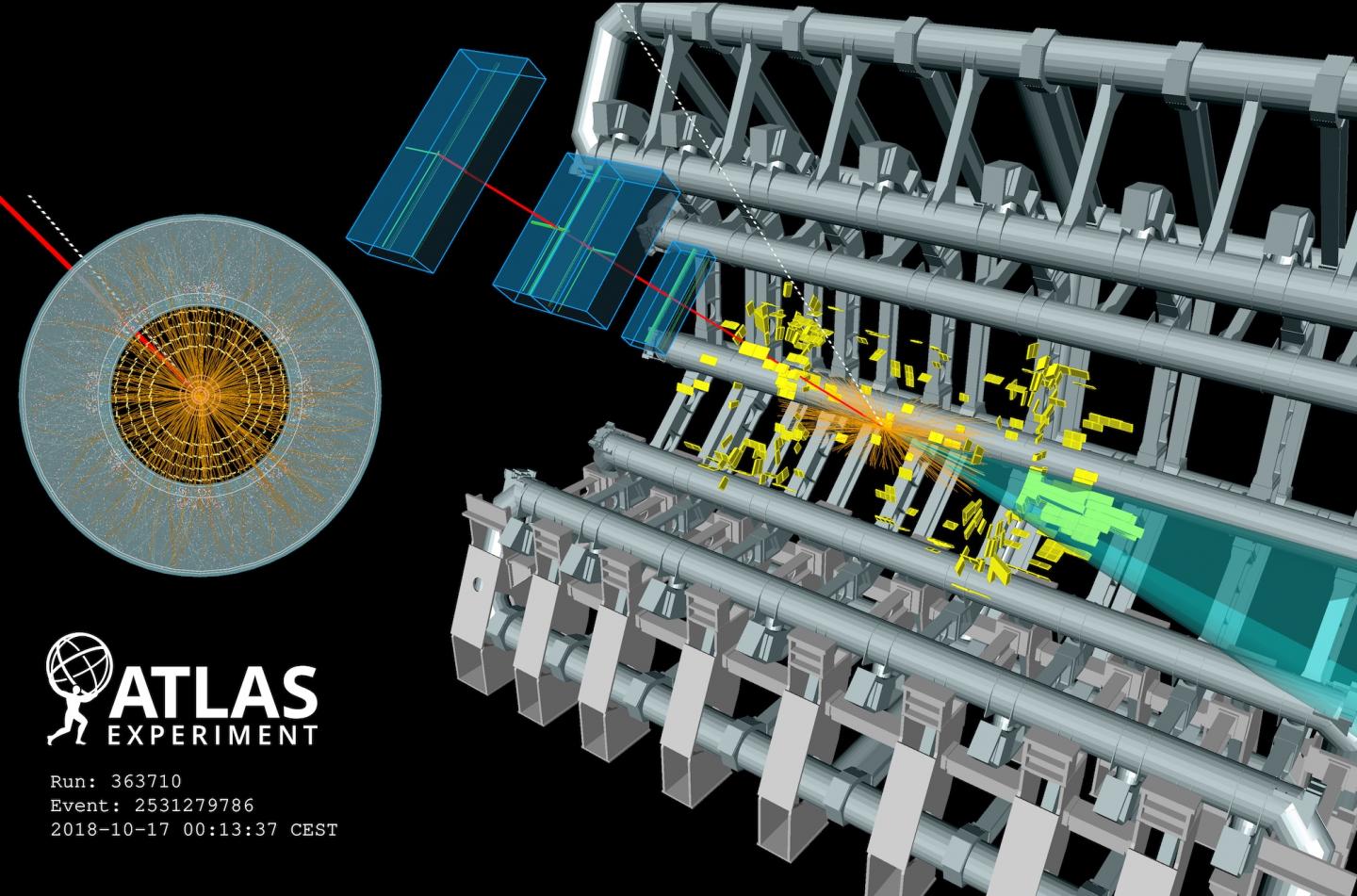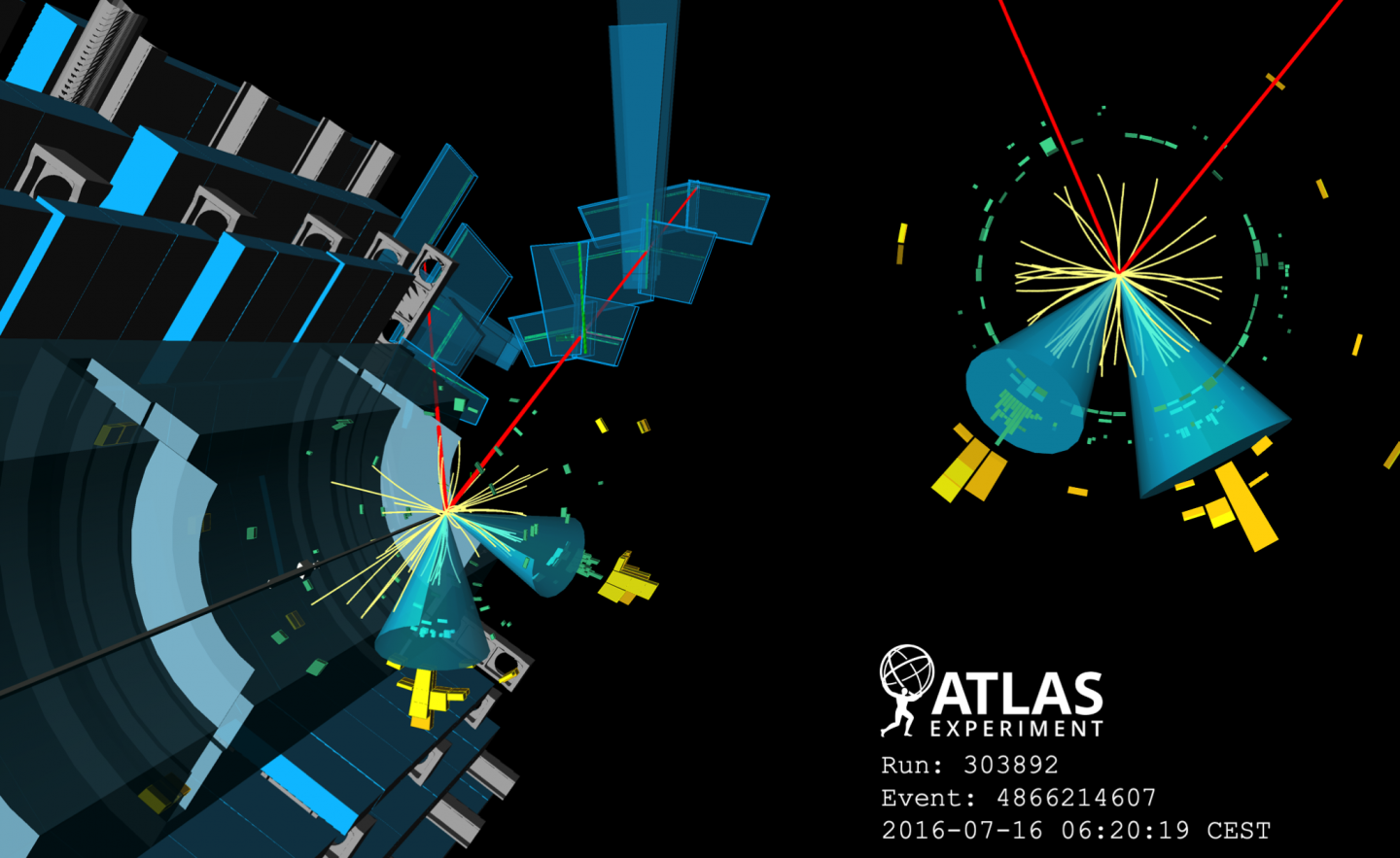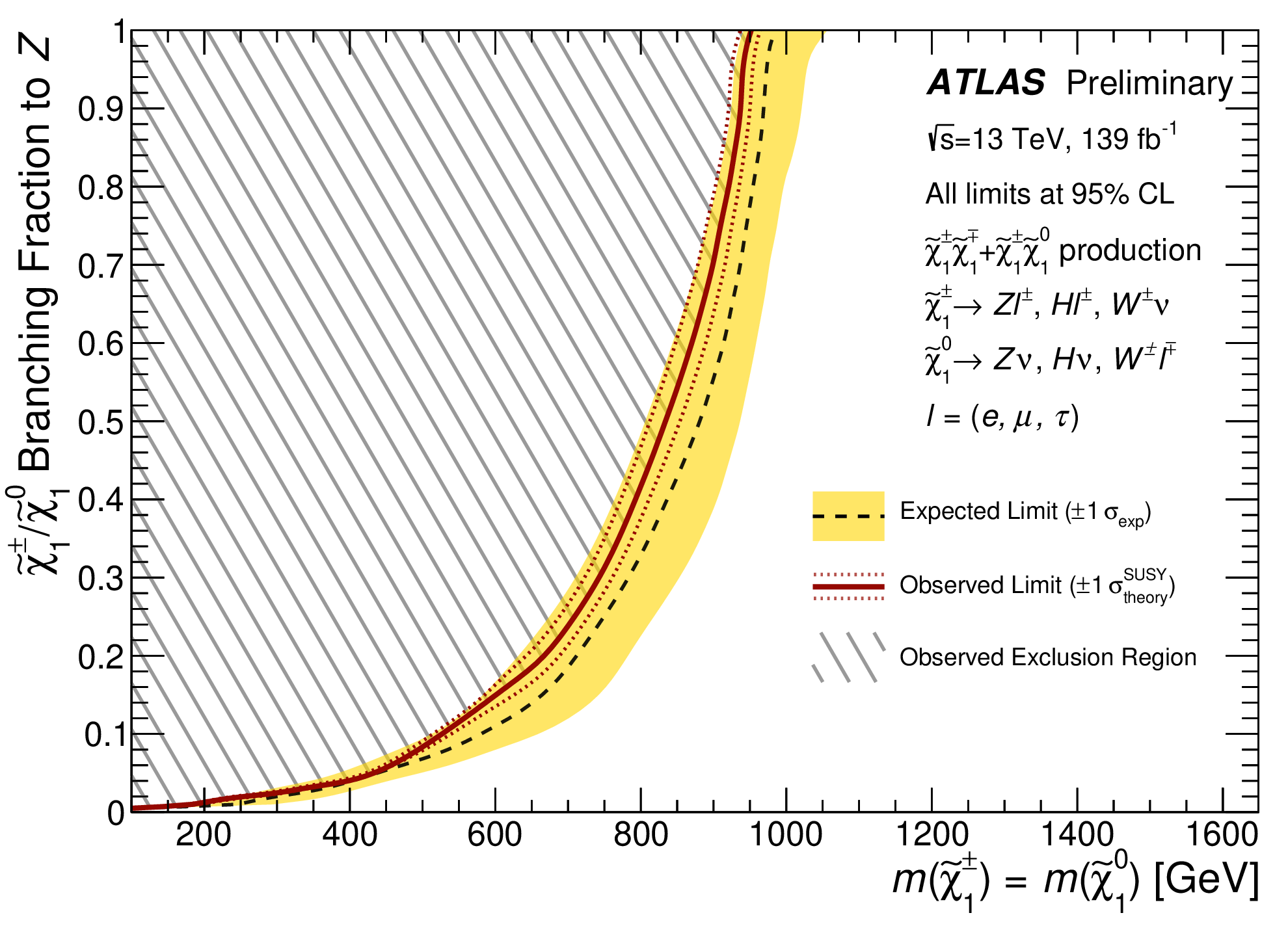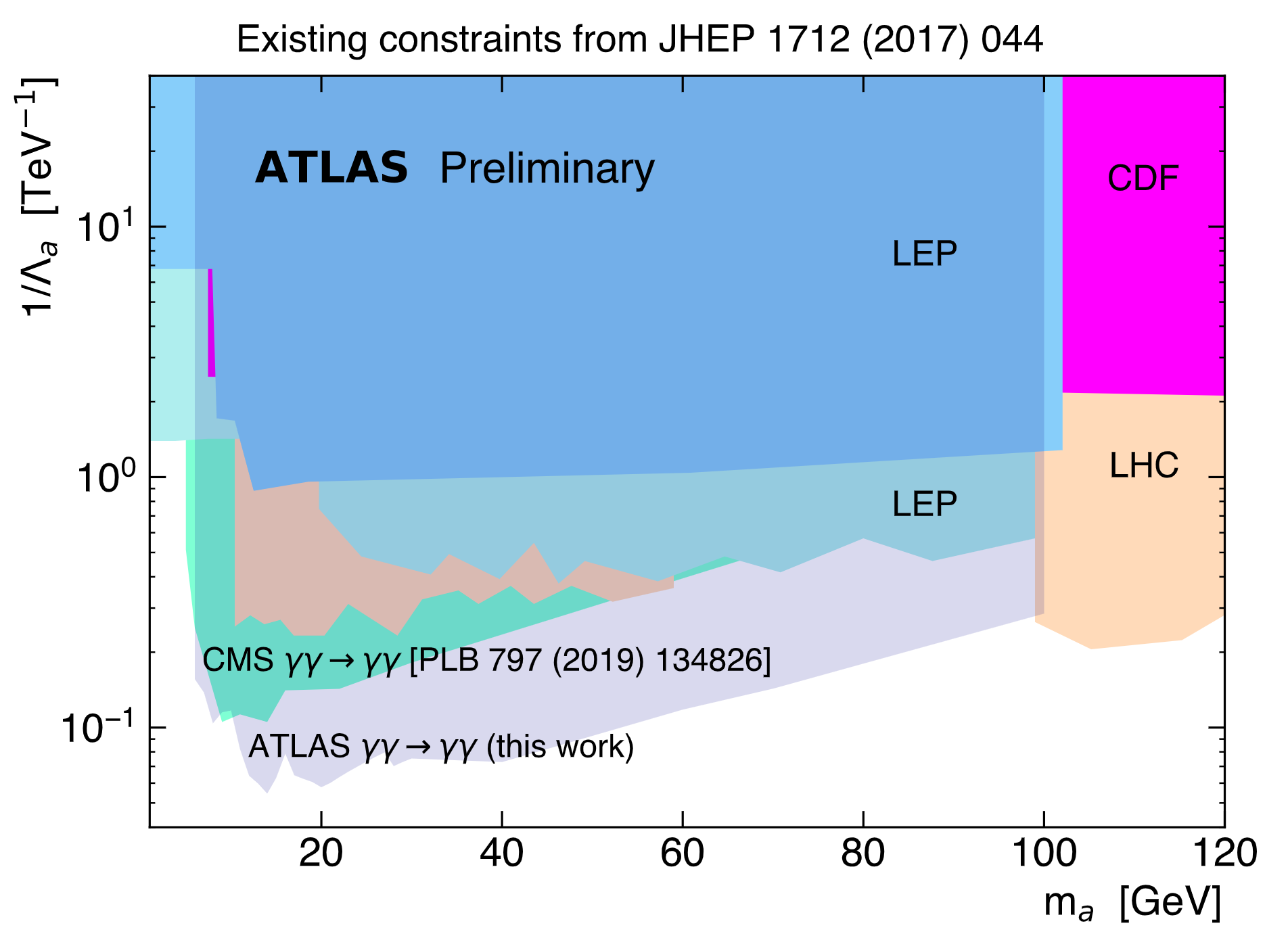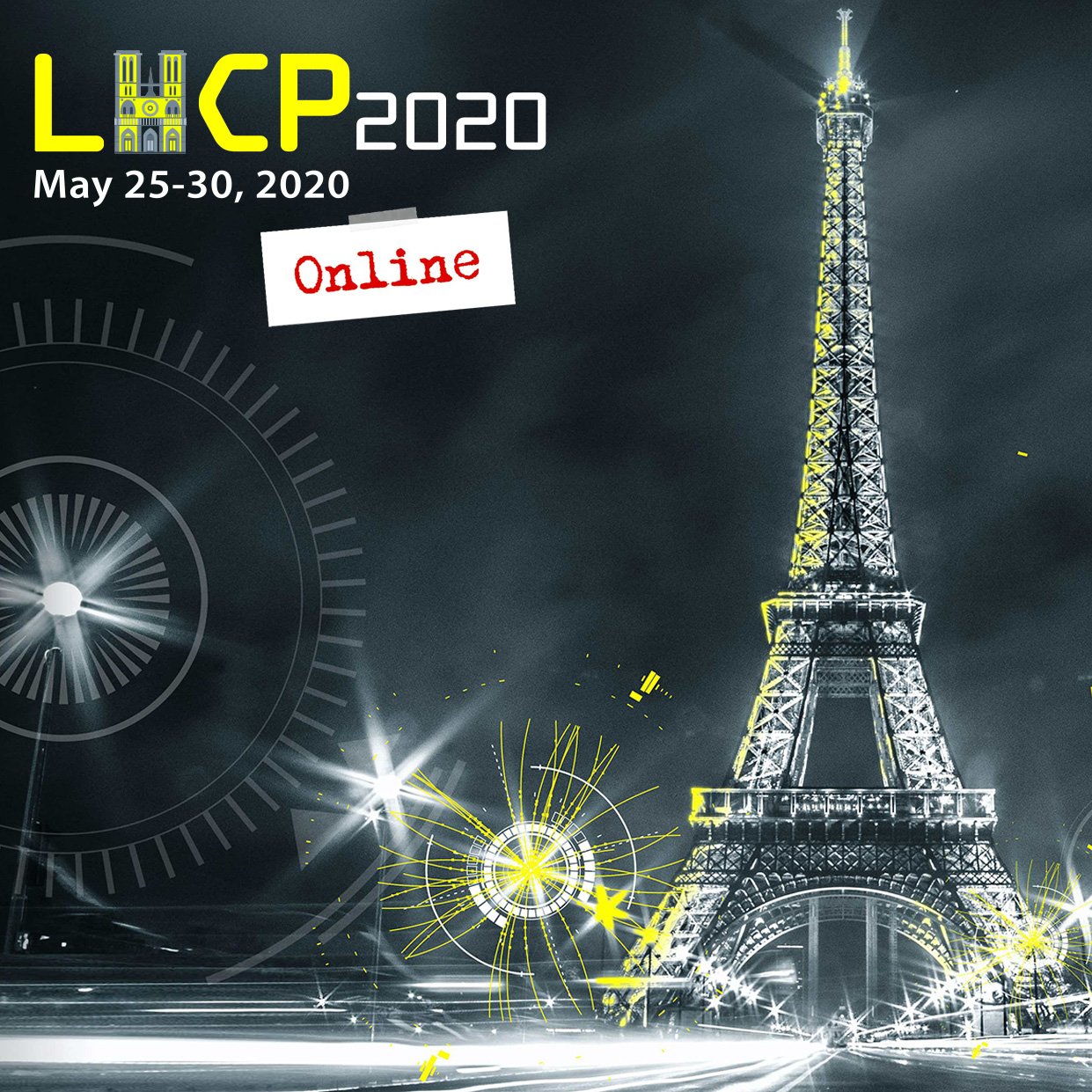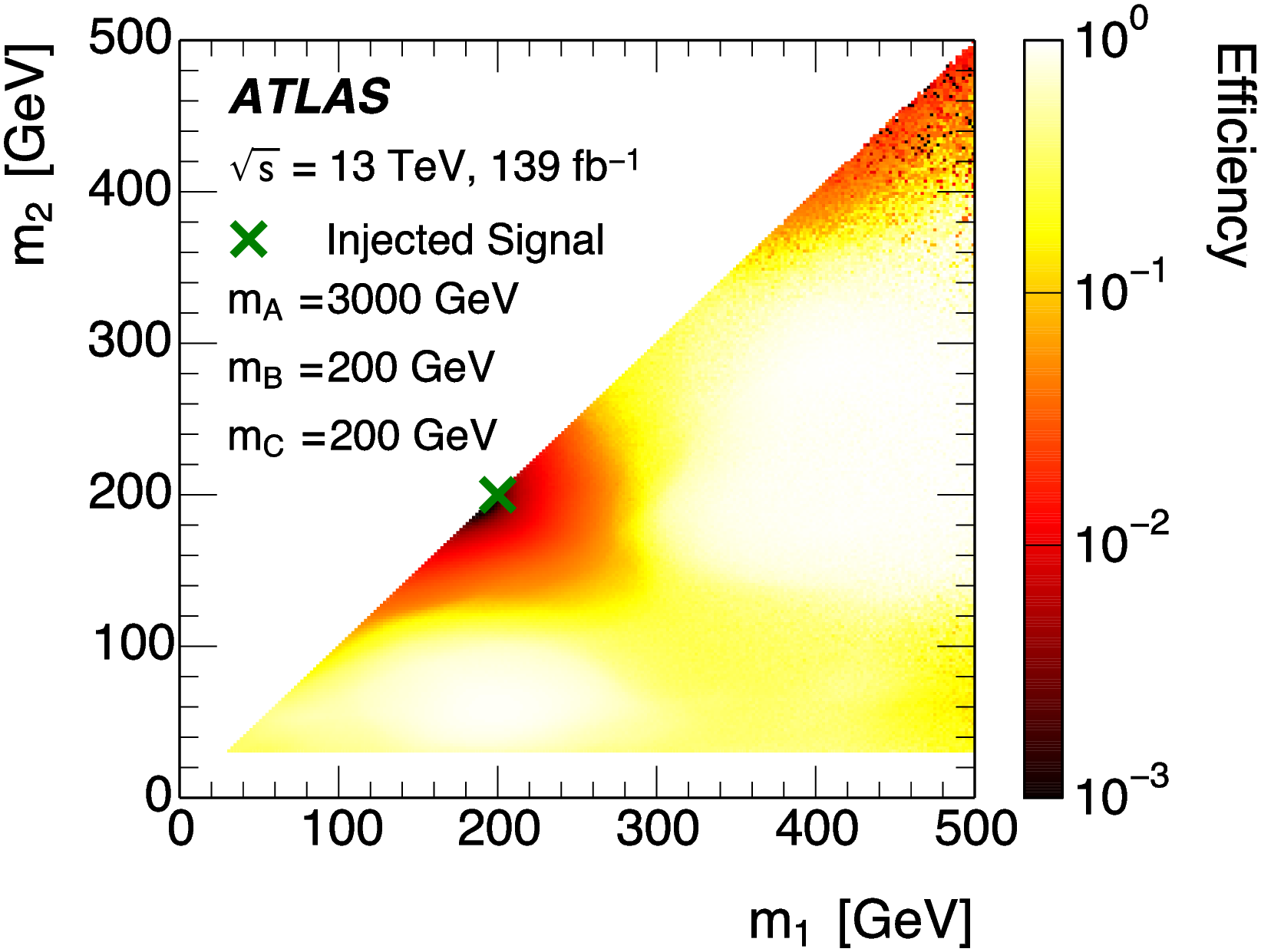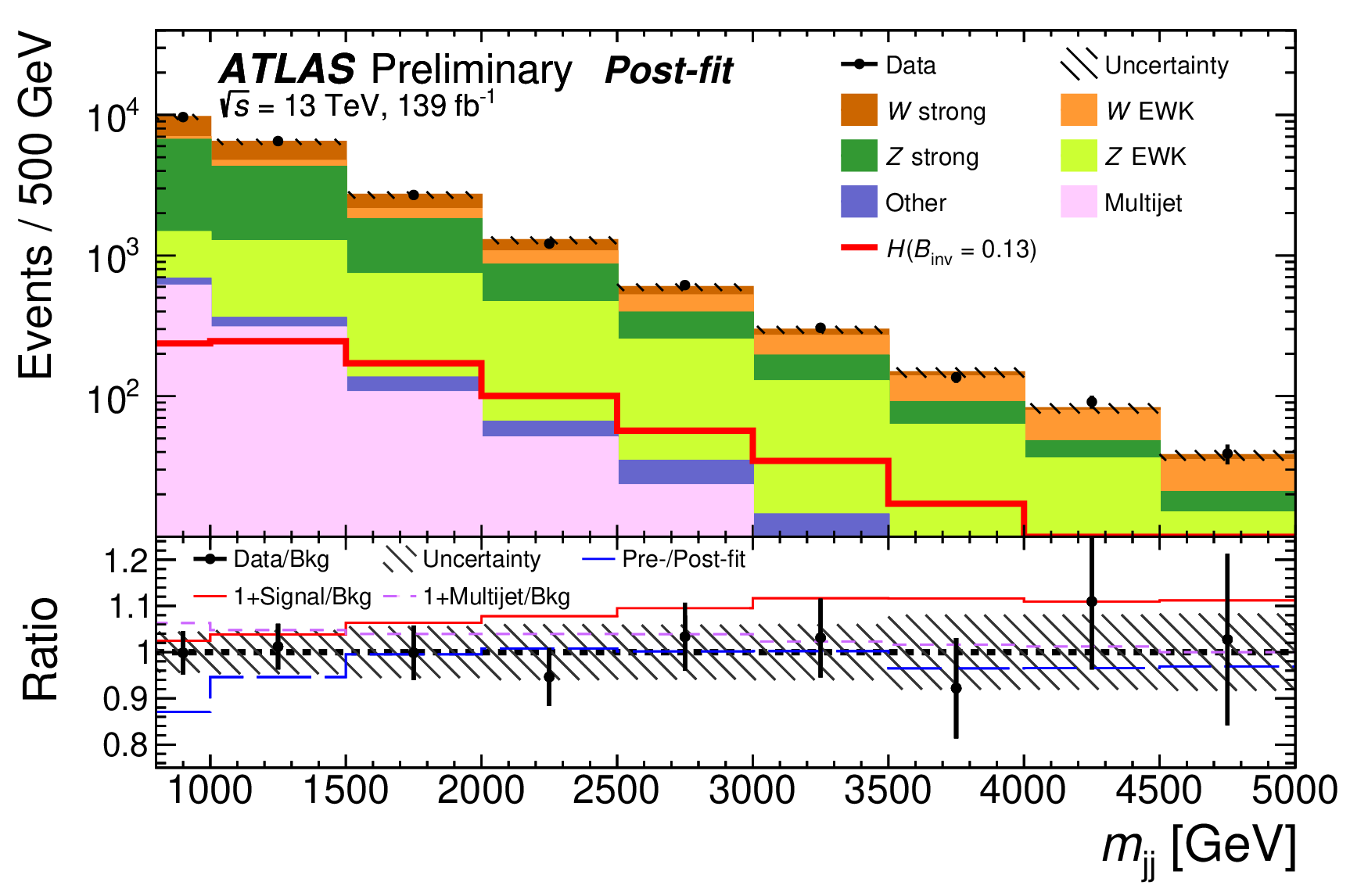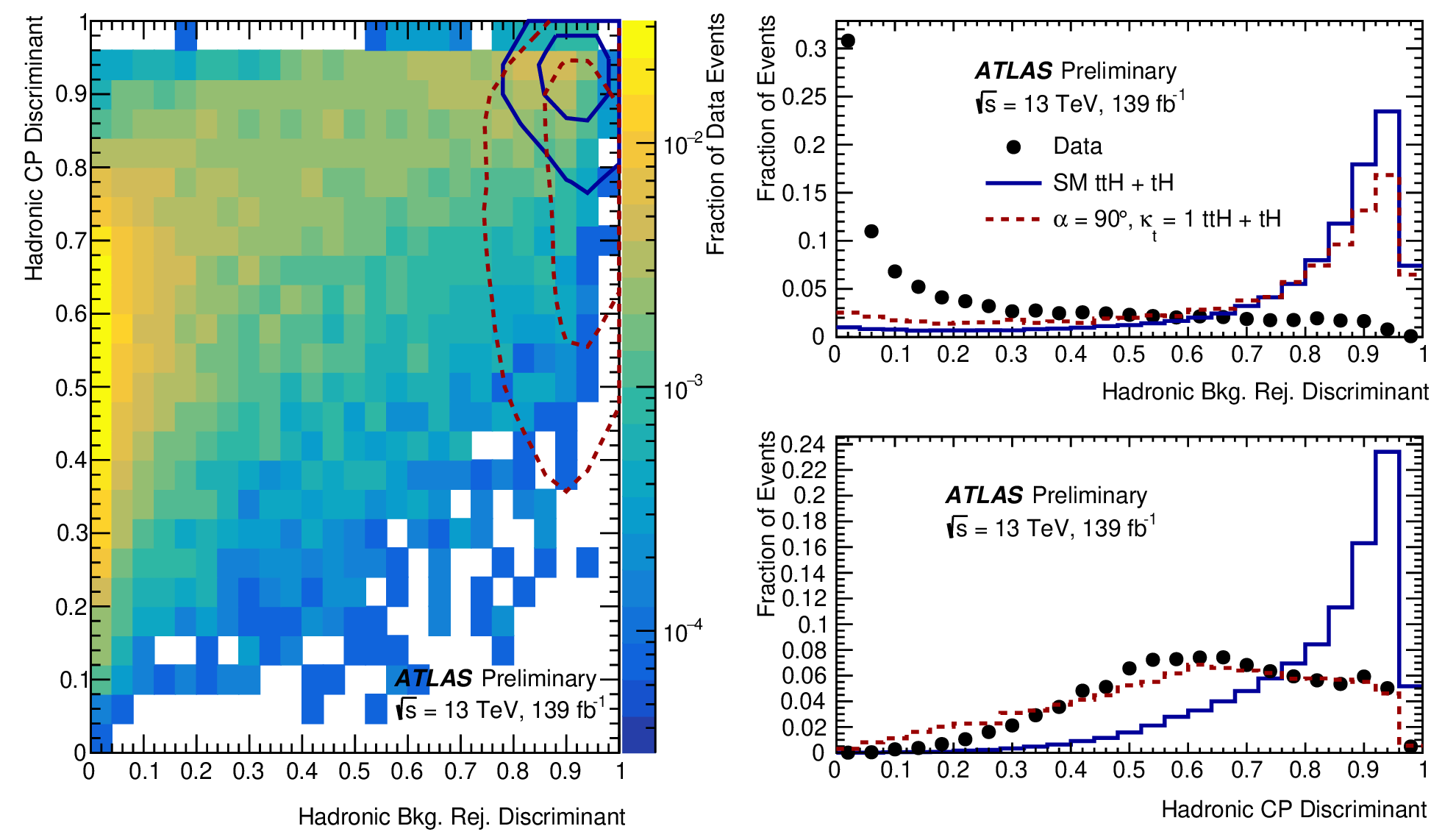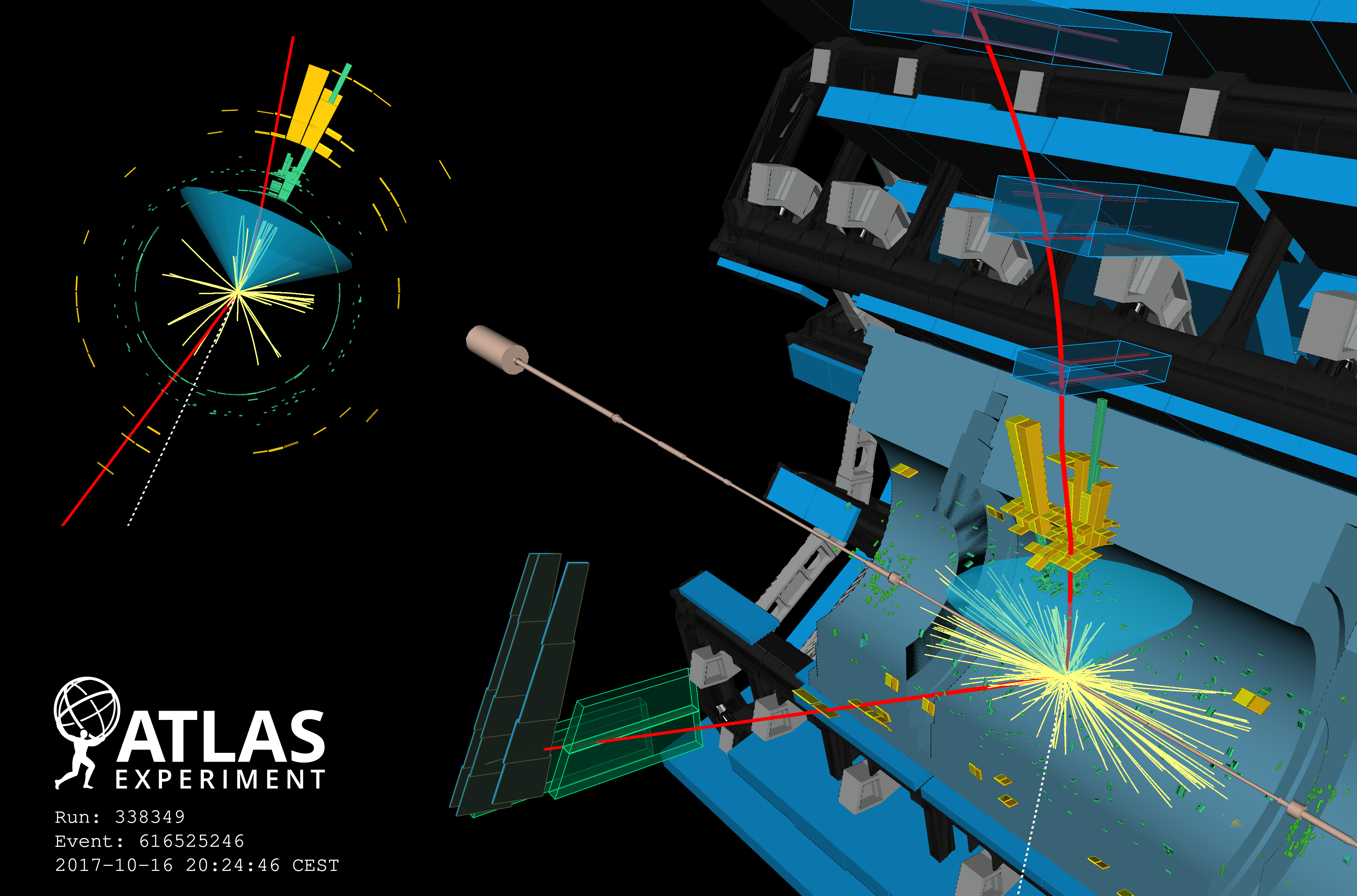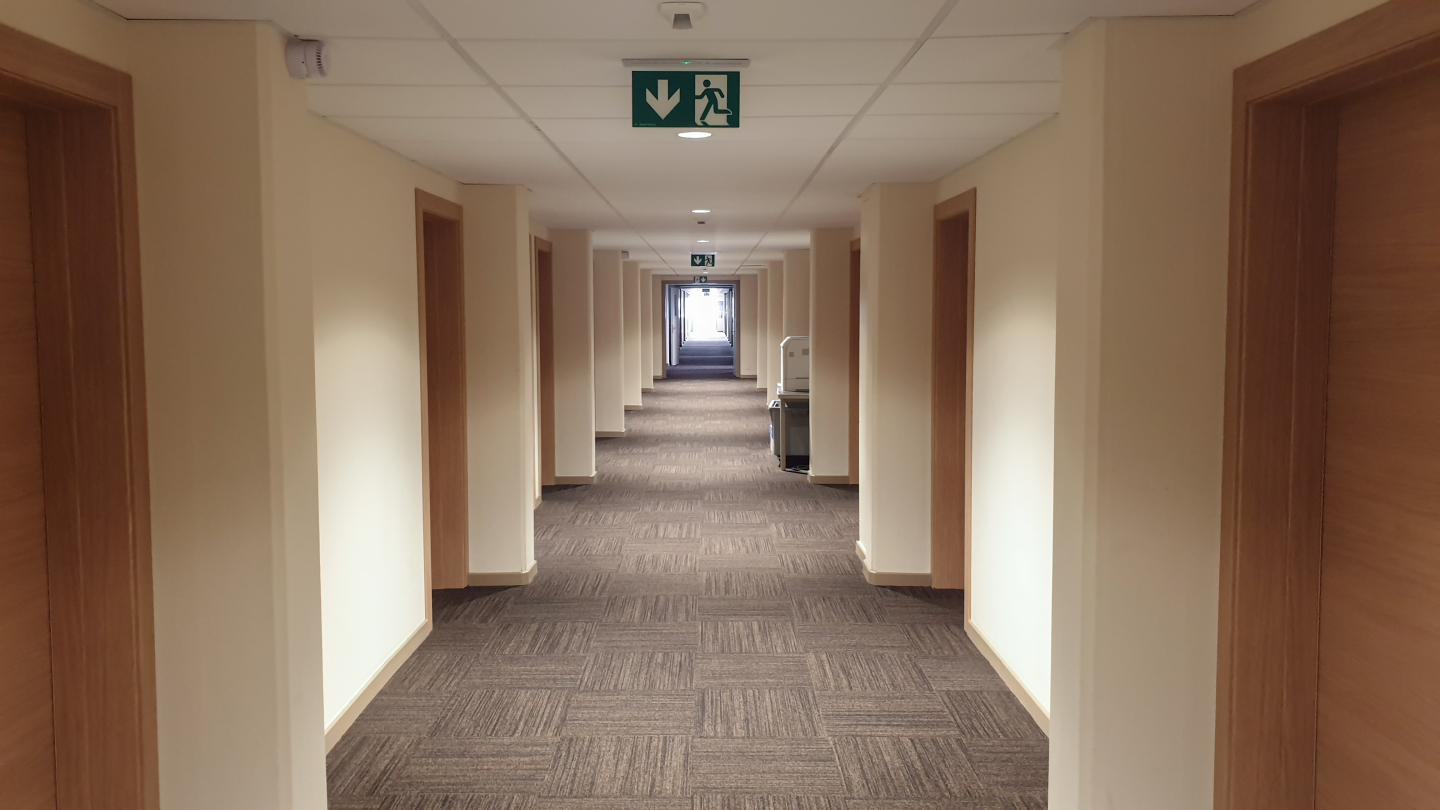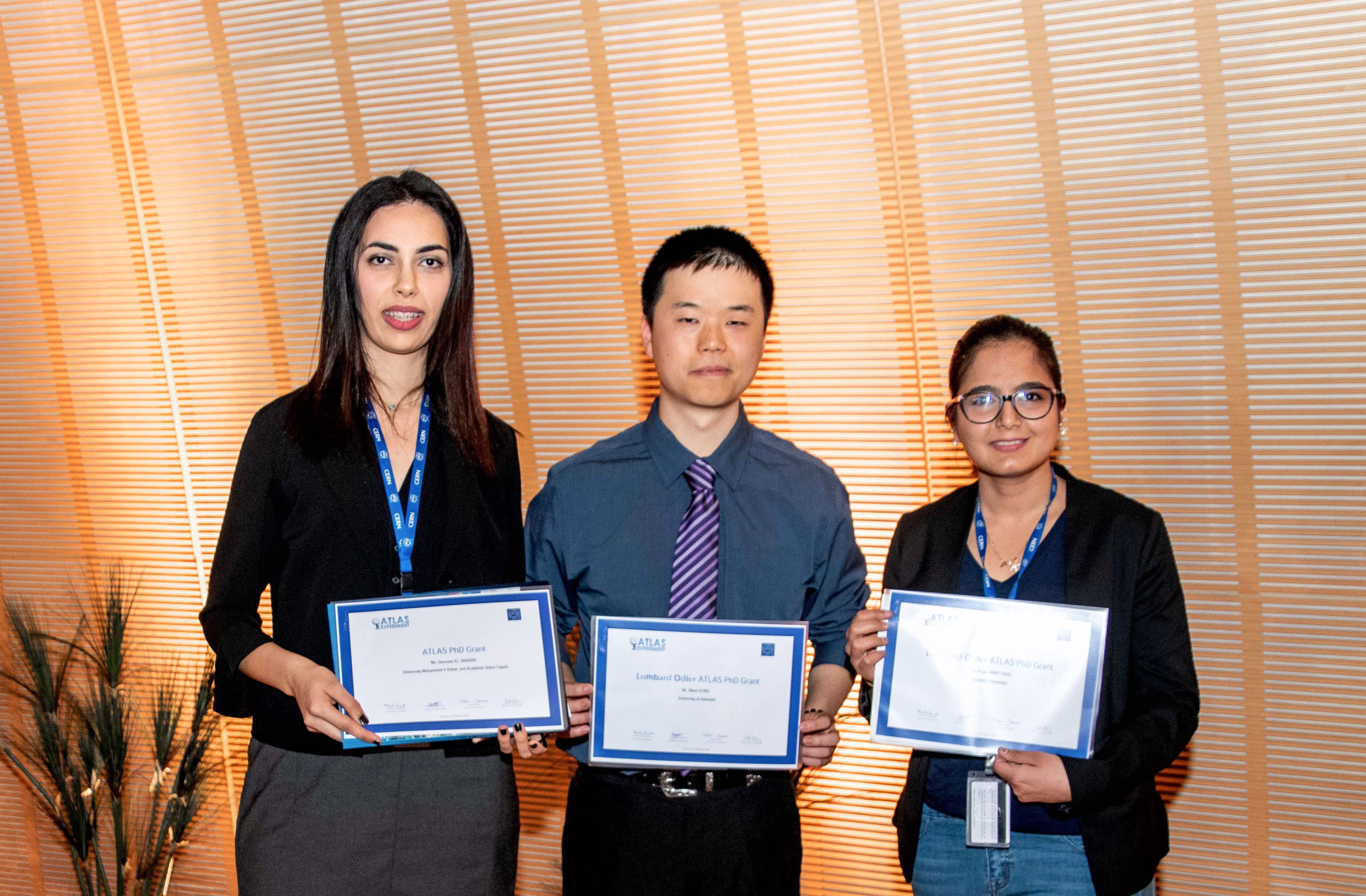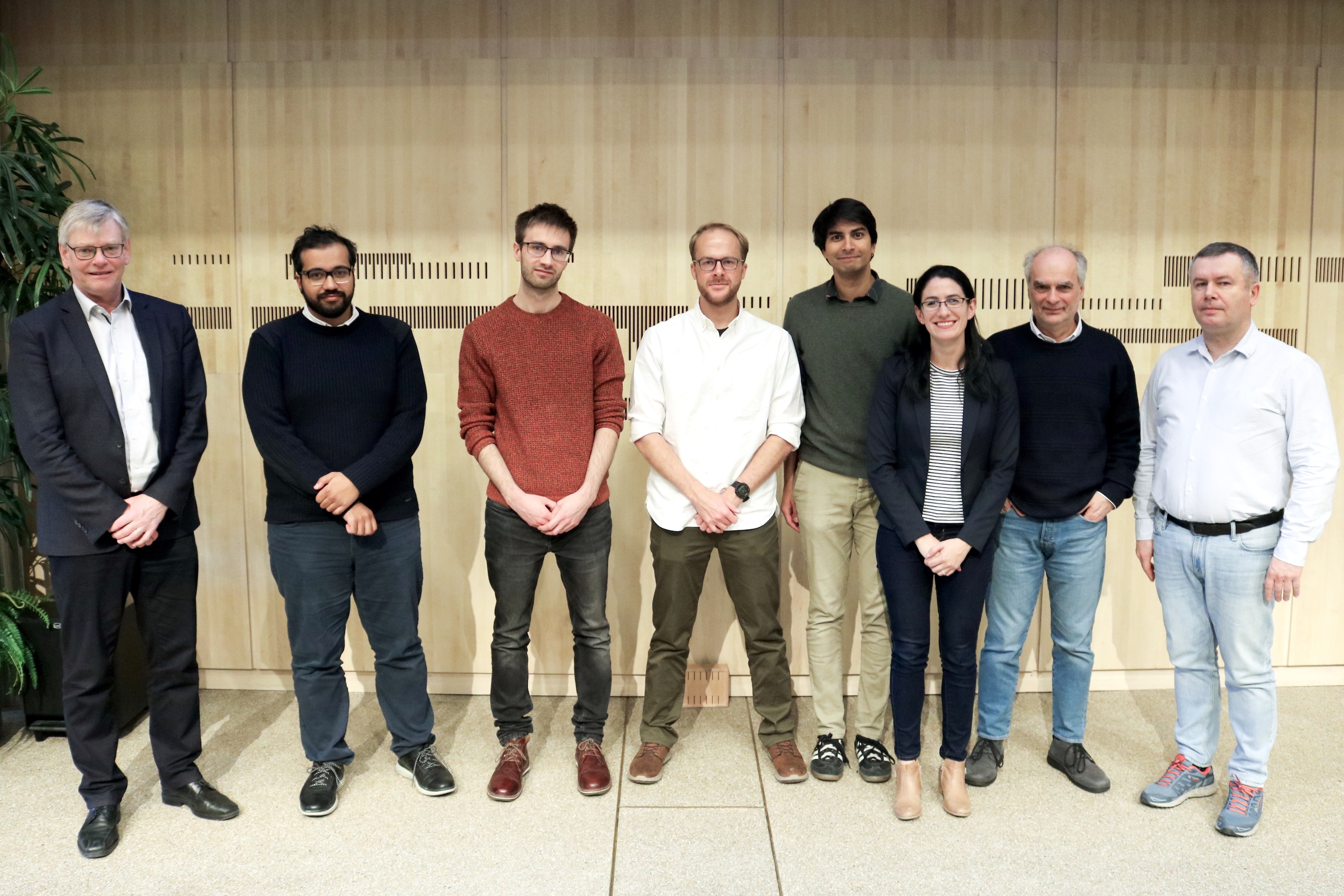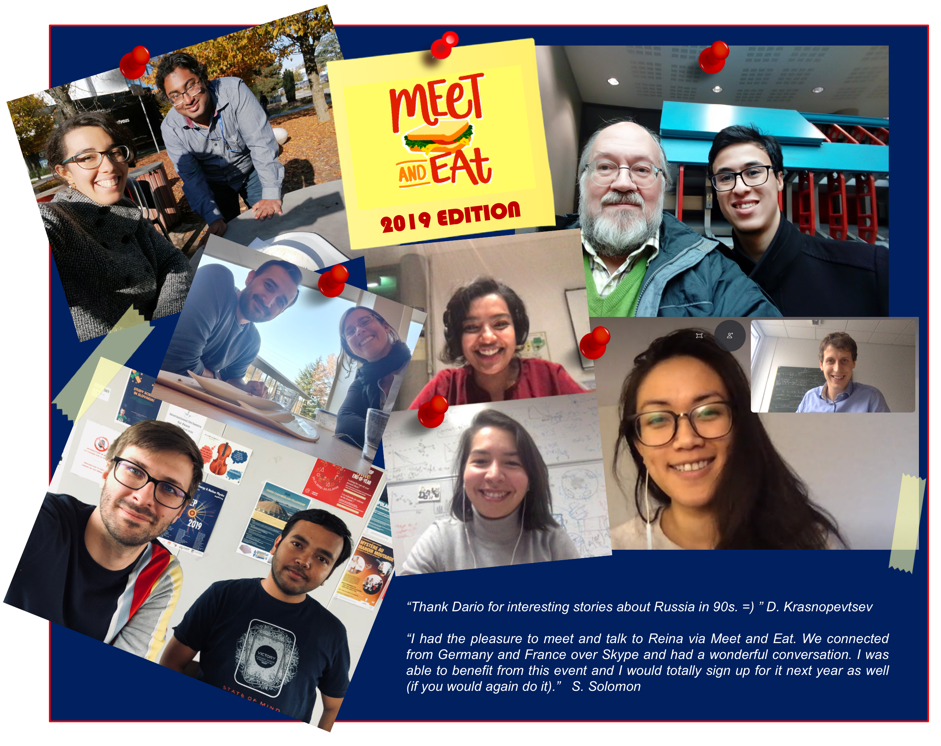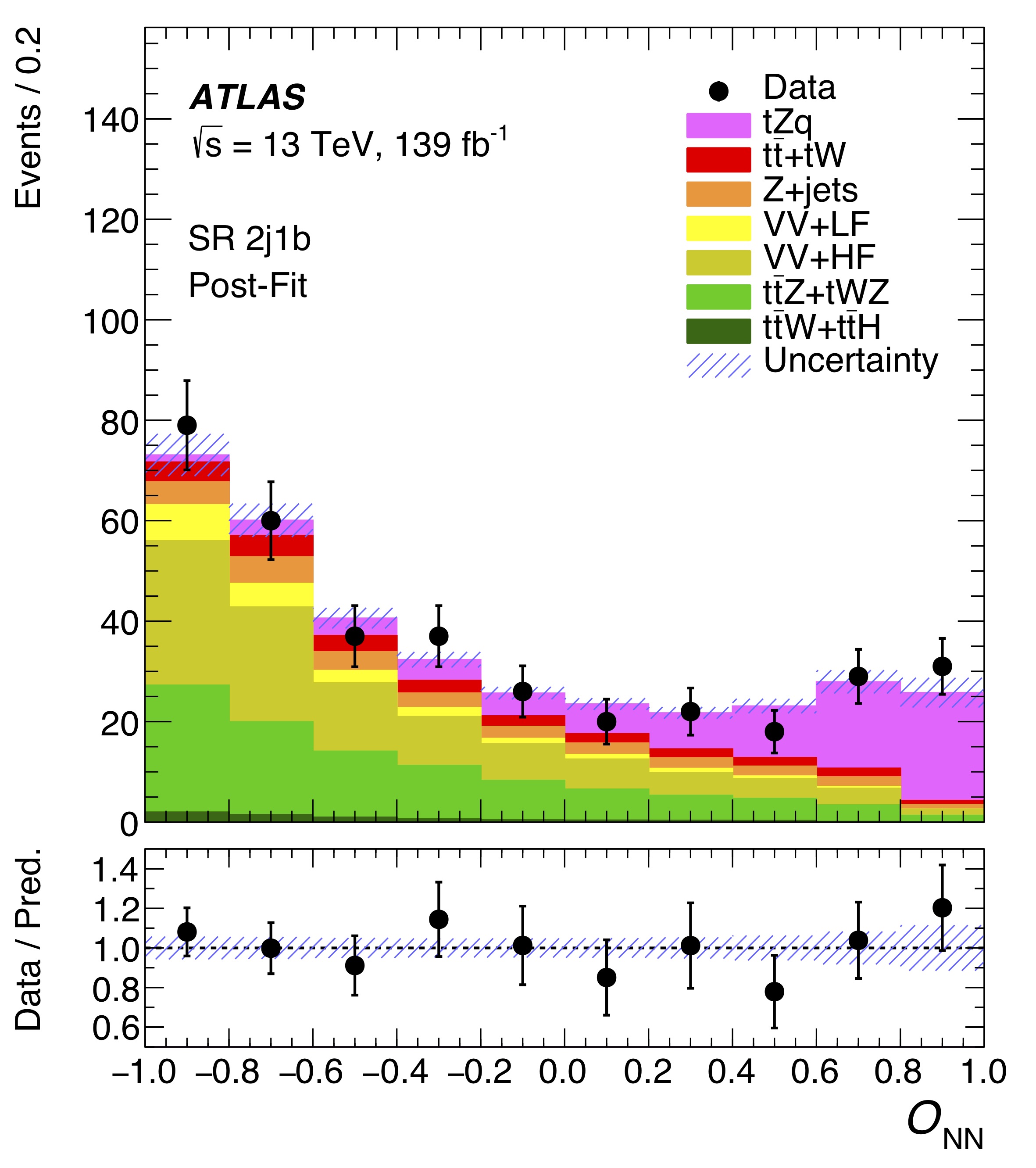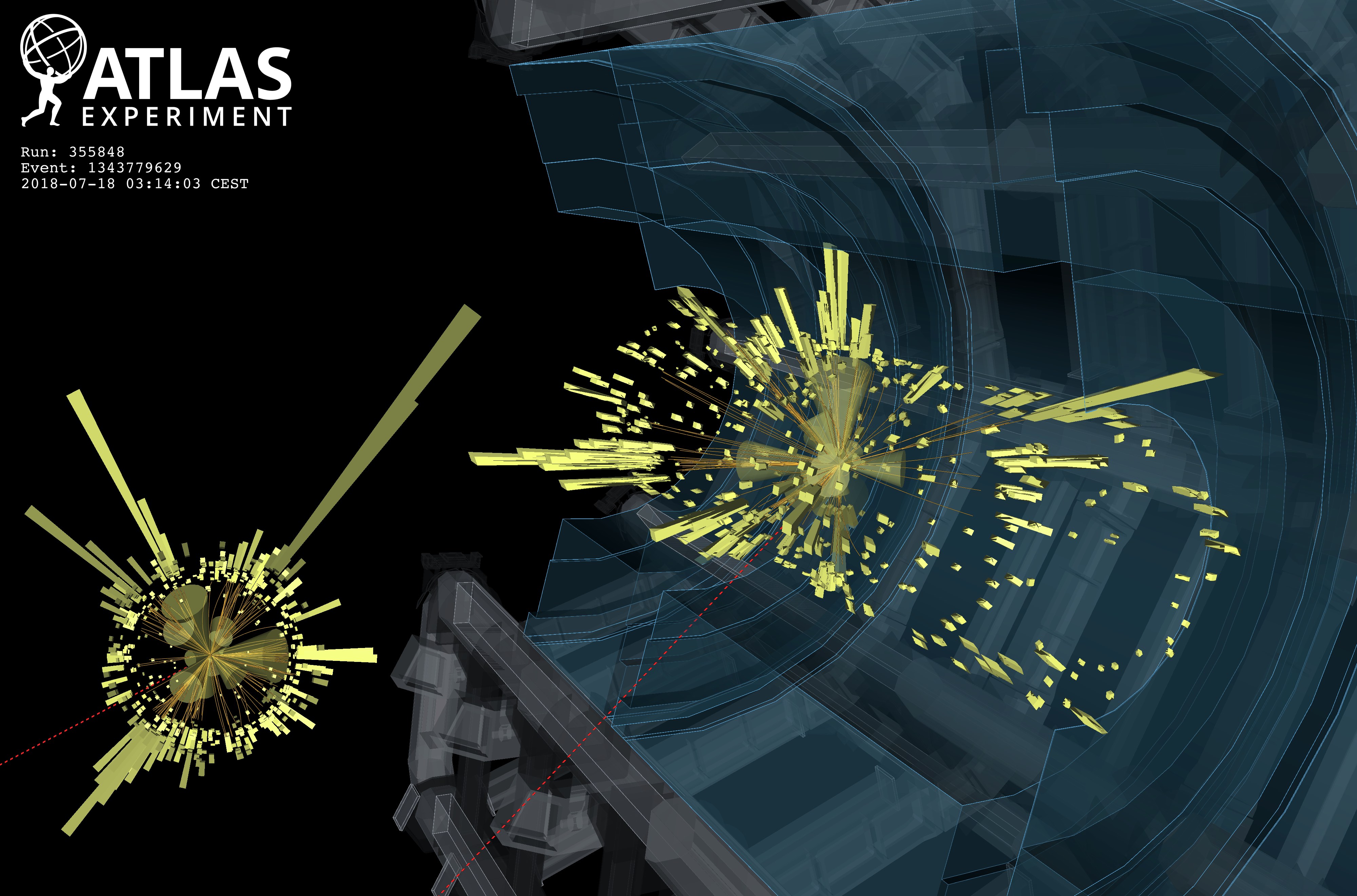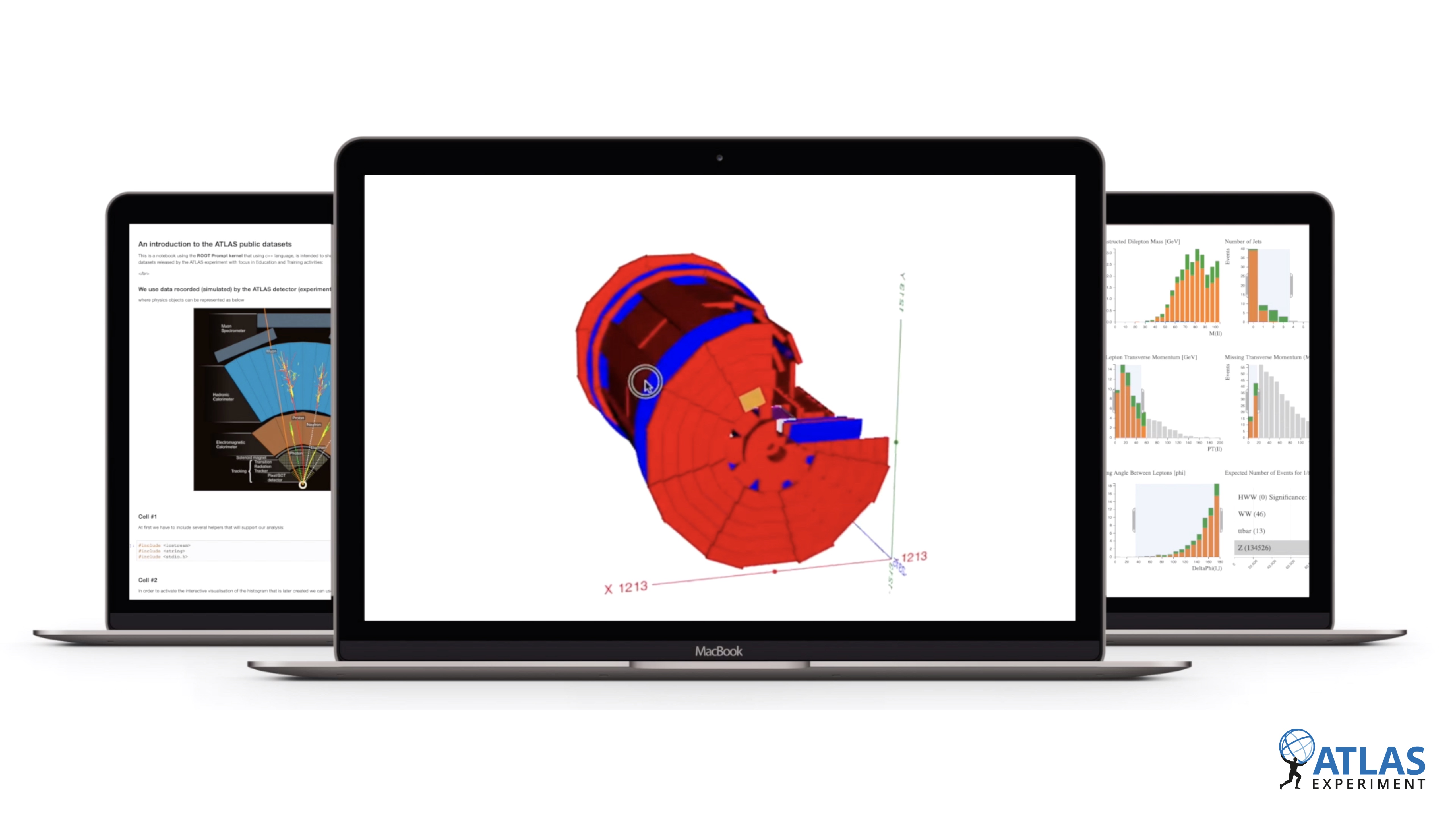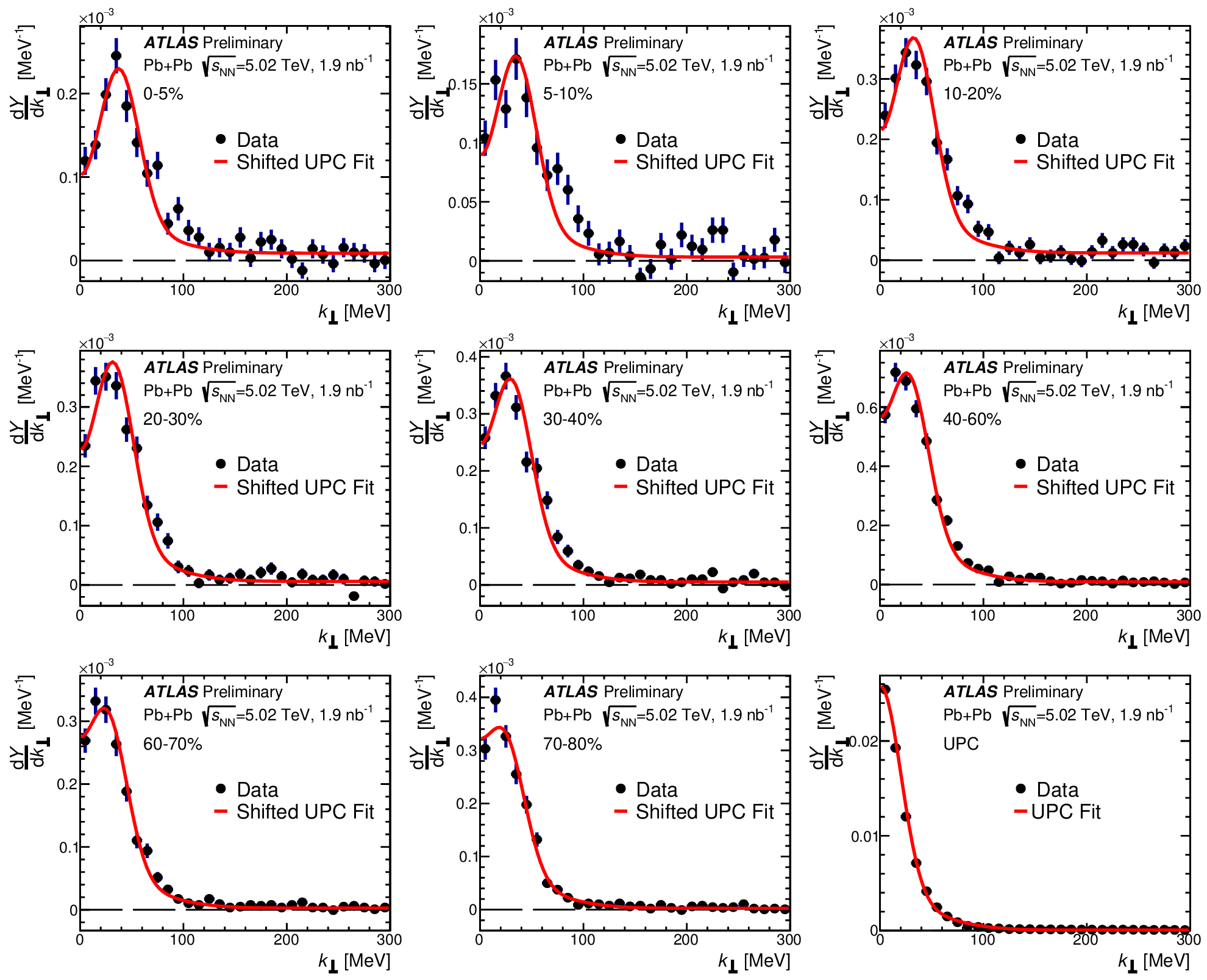The hunt for higgsinos reaches new limits
Physics Briefing | 10th June 2021
ATLAS Live talk: Physics Through the Looking Glass with Dr. Laura Jeanty
News | 29 May 2020
New ATLAS result addresses long-standing tension in the Standard Model
This week, at the LHCP 2020 conference, the ATLAS Collaboration presented a precise measurement of lepton flavour universality using a brand-new technique. Physicists examined collision events where pairs of top quarks decay to pairs of W bosons, and subsequently into leptons. They then measured the relative probability that this lepton is a muon or a tau-lepton – a ratio known as R(τ/μ). According to the Standard Model, R(τ/μ) should be unity – but there has been long-standing tension with this prediction, ever since it was measured at the Large Electron-Positron (LEP) collider in the 1990s.
Physics Briefing | 28 May 2020
Fantastic decays and where to find them
Supersymmetry offers an elegant solution to the limitations of the Standard Model, extending it to give each elementary particle a “superpartner” with different spin properties. Yet SUSY also contains interactions that would cause phenomena not observed in nature, such as the decay of protons. This has traditionally been avoided by requiring the conservation of a property known as “R-parity” (or “matter-parity”), which incorporates the baryon number, lepton number and spin. ATLAS physicists are also considering SUSY models with R-parity violation (or “RPV”), which would allow the lightest SUSY particle to be observed decaying directly into Standard Model particles.
Physics Briefing | 27 May 2020
ATLAS finds evidence of spectacular four-top quark production
In a new result released today, the ATLAS Collaboration announced strong evidence of the production of four top quarks. This rare Standard Model process is expected to occur only once for every 70 thousand pairs of top quarks created at the LHC and has proven extremely difficult to measure.
Physics Briefing | 26 May 2020
ATLAS measures light scattering on light and constrains axion-like particles
Light-by-light scattering is a very rare phenomenon in which two photons – particles of light – interact, producing another pair of photons. Direct observation of this process at high energy had proven elusive for decades, until it was first seen by the ATLAS Collaboration in 2016 and established in 2019. In a new measurement, ATLAS physicists are using light-by-light scattering to search for a hyped phenomenon beyond the Standard Model of particle physics: axion-like particles.
Physics Briefing | 25 May 2020
Summary of new ATLAS results from LHCP 2020
The eighth annual conference on Large Hadron Collider physics (LHCP 2020) kicks off today in video-conference rooms around the world. This week-long event is usually an opportunity for physicists from around the world to meet in person and share the latest news from their LHC experiments. This year, due to the COVID-19 pandemic, the conference is being held online.
News | 25 May 2020
Machine learning qualitatively changes the search for new particles
The ATLAS Collaboration is exploring novel ways to search for new phenomena. Alongside an extensive research programme often inspired by specific theoretical models – ranging from quantum black holes to supersymmetry – physicists are applying new model-independent methods to broaden their searches. ATLAS has just released the first model-independent search for new particles using a novel technique called “weak supervision”.
Physics Briefing | 13 May 2020
Probing Dark Matter with the Higgs boson
Could the Higgs boson decay into dark matter? As dark matter does not interact directly with the ATLAS detector, physicists look for signs of “invisible particles”, inferred through momentum conservation of the proton–proton collision products. The ATLAS Collaboration searched the full LHC Run 2 dataset, setting the strongest limits on the Higgs boson decaying to invisible dark-matter particles to date.
Physics Briefing | 21 Apr 2020
ATLAS searches for rare Higgs boson decays into a photon and a Z boson
The ATLAS Collaboration has just released a new result searching for the Higgs-boson decay to a Z boson and a photon. This result uses the full LHC Run 2 dataset, analysing almost four times as many Higgs-boson events as the previous ATLAS result.
Physics Briefing | 21 Apr 2020
Novel probes of the strong force: precision jet substructure and the Lund jet plane
A hallmark of the strong force at the Large Hadron Collider (LHC) is the dramatic production of collimated jets of particles when quarks and gluons scatter at high energies. Particle physicists have studied jets for decades to learn about the structure of quantum chromodynamics – or QCD, the theory of the strong interaction – across a wide range of energy scales. Recent theoretical and experimental advancements in their study is now allowing ATLAS physicists to test the strong force in new ways.
Physics Briefing | 19 Apr 2020
Searching for new sources of matter–antimatter symmetry breaking in Higgs boson interaction with top quarks
When a particle is transformed into its antiparticle and its spatial coordinates inverted, the laws of physics are required to stay the same – or so we thought. This symmetry – known as “CP symmetry” (Charge conjugation and Parity symmetry) – was considered to be exact until 1964, when a study of the kaon particle system led to the discovery of “CP violation”. In a new result presented today, the ATLAS Collaboration performed a direct test of the CP properties of the interaction between the Higgs boson and top quarks. The result is based on an analysis of the full LHC Run-2 dataset, looking at collision events where the Higgs boson is produced in association with one or two top quarks, and in turn decays into two photons.
Physics Briefing | 07 Apr 2020
Measuring the beauty of the Higgs boson
Two years ago, the Higgs boson was observed decaying to a pair of beauty-quarks (H→bb), moving its study from the “discovery era” to the “measurement era”. In new results presented today, the ATLAS Collaboration studied the full LHC Run 2 dataset to give an updated measurement of H→bb, where the Higgs boson is produced in association with a vector boson (W or Z).
Physics Briefing | 07 Apr 2020
ATLAS Collaboration enters active “Safe Mode”
The global health crisis caused by COVID-19 has impacted every aspect of life. Much of the world’s population are sheltering in place, with ATLAS Collaboration members similarly affected.
News | 02 Apr 2020
ATLAS PhD Grant continues its support of up-and-coming talents
At an award ceremony in the Globe of Science and Innovation, the ATLAS Collaboration celebrated the new recipients of the ATLAS PhD Grant: Prajita Bhattarai, Hassnae El Jarrari and Albert Kong.
News | 11 Mar 2020
ATLAS Thesis Awards: And the winners are…
With over 5000 members in 181 institutions, contributions to the ATLAS Collaboration can take a variety of forms. Every February, ATLAS celebrates the outstanding work of one particular set of members: its PhD students.
News | 03 Mar 2020
Serving up new winter recipes with the ATLAS Early Career Scientist Board
In 2019, I joined the ATLAS Early Career Scientist Board (ECSB): a special advisory group dedicated to assisting the ATLAS Collaboration in building an environment where the full scientific potential of scientists at the start of their career can be realised. The board organises several activities for the ATLAS community (you may have seen all of our summer activities described in this blog). I was actively involved in the winter activities. They were all fantastic experiences to improve social relationships in a 5000-people collaboration.
Blog | 28 Feb 2020
25 years on: a single top quark partners with the Z boson
A quarter-century after its discovery, physicists at the ATLAS Experiment are gaining new insight into the heaviest-known particle: the top quark. The huge amount of data collected during Run 2 of the LHC (2015-2018) has allowed physicists to study rare production processes of the top quark in great detail, including its production in association with other heavy elementary particles.
Physics Briefing | 21 Feb 2020
Searching for natural supersymmetry using novel techniques
In new results presented today at CERN, the ATLAS Experiment’s search for supersymmetry (SUSY) reached new levels of sensitivity. The results examine a popular SUSY extension studied at the Large Hadron Collider (LHC): the “Minimal Supersymmetric Standard Model” (MSSM), which includes the minimum required number of new particles and interactions to make predictions at the LHC energies.
Physics Briefing | 18 Feb 2020
ATLAS Experiment releases 13 TeV Open Data for Science Education
The ATLAS Collaboration at CERN has just released the first open dataset from the Large Hadron Collider’s (LHC) highest-energy run at 13 teraelectronvolts (TeV). The new release is specially developed for science education, underlining the Collaboration’s long-standing commitment to students and teachers using open-access ATLAS data and related tools.
Press Statement | 10 Feb 2020
In conversation with Philippe Farthouat, a driving force behind ATLAS electronics
Philippe Farthouat has played a critical role in electronics development since the beginning of ATLAS, from design and prototyping to testing and installation. He has been the overall ATLAS electronics coordinator since 1999.
Portrait | 14 Jan 2020
Sharing the Excitement of ATLAS
This past week, I grabbed a last-minute opportunity to wander about and take in the beauty of my favourite particle physics detector. Located 100 meters under the French/Swiss border near Geneva, ATLAS is always a marvel to see and to explore. Although I have hosted hundreds of visits by its side, I never tire of the view and inevitably pull out my phone or camera to photograph it, yet again.
Blog | 22 Dec 2019
New open release streamlines interactions with theoretical physicists
What if you could test a new theory against LHC data? Better yet, what if the expert knowledge needed to do this was captured in a convenient format? This tall order is now on its way from the ATLAS Collaboration, with the first open release of full analysis likelihoods from an LHC experiment.
News | 12 Dec 2019
African scientists take on new ATLAS machine-learning challenge
Cirta is a new machine-learning challenge for high-energy physics on Zindi, the Africa-based data-science challenge platform. Launched this autumn at the International Conference on High Energy and Astroparticle Physics (TIC-HEAP), Constantine, Algeria, Cirta challenges participants to provide machine-learning solutions for identifying particles in LHC experiment data.
News | 20 Nov 2019
ATLAS probes the quark-gluon plasma in a new study of photo-produced muon pairs
The electromagnetic fields of the Lorentz-contracted lead nuclei in heavy-ion collisions at the LHC act as intense sources of high-energy photons, or particles of light. This environment allows physicists to study photon-induced scattering processes, that can not be studied elsewhere. A key process examined by ATLAS physicists involves the annihilation of photons into pairs of oppositely charged muons. The ATLAS Collaboration recently released a new, comprehensive measurement of this process.
Physics Briefing | 19 Nov 2019
Ensuring high-quality data at ATLAS
During Run 2, ATLAS achieved an exceptionally high data-quality efficiency for a hadron collider, with over 95% of the 13 TeV proton-proton collision data certified for physics analysis. In a new paper released today, the ATLAS data quality team summarises how this excellent result was achieved.
Physics Briefing | 13 Nov 2019

